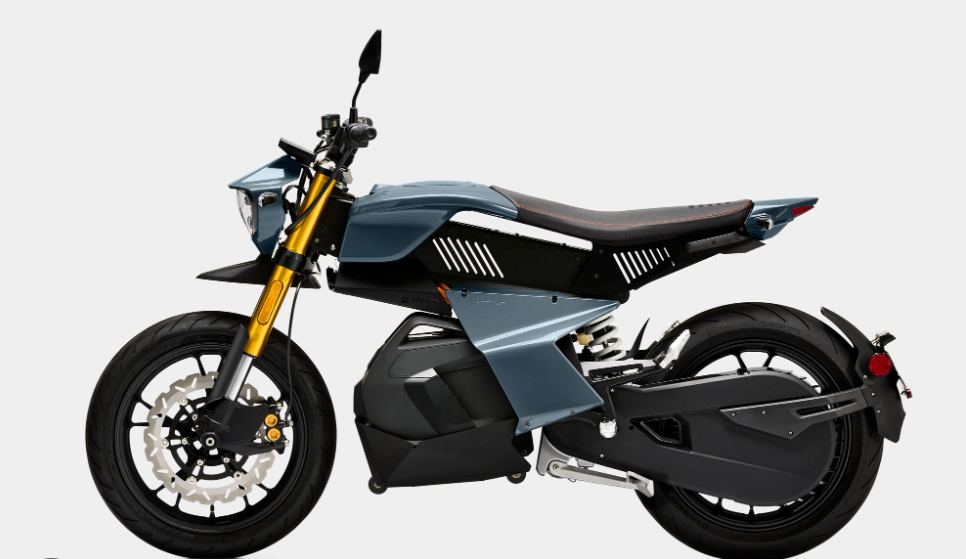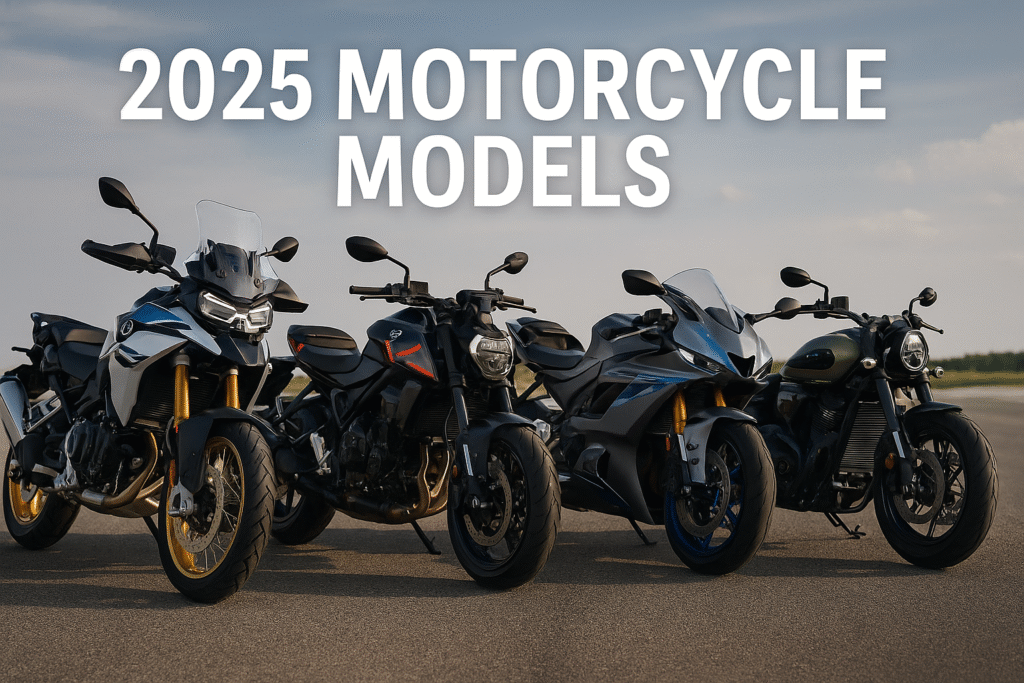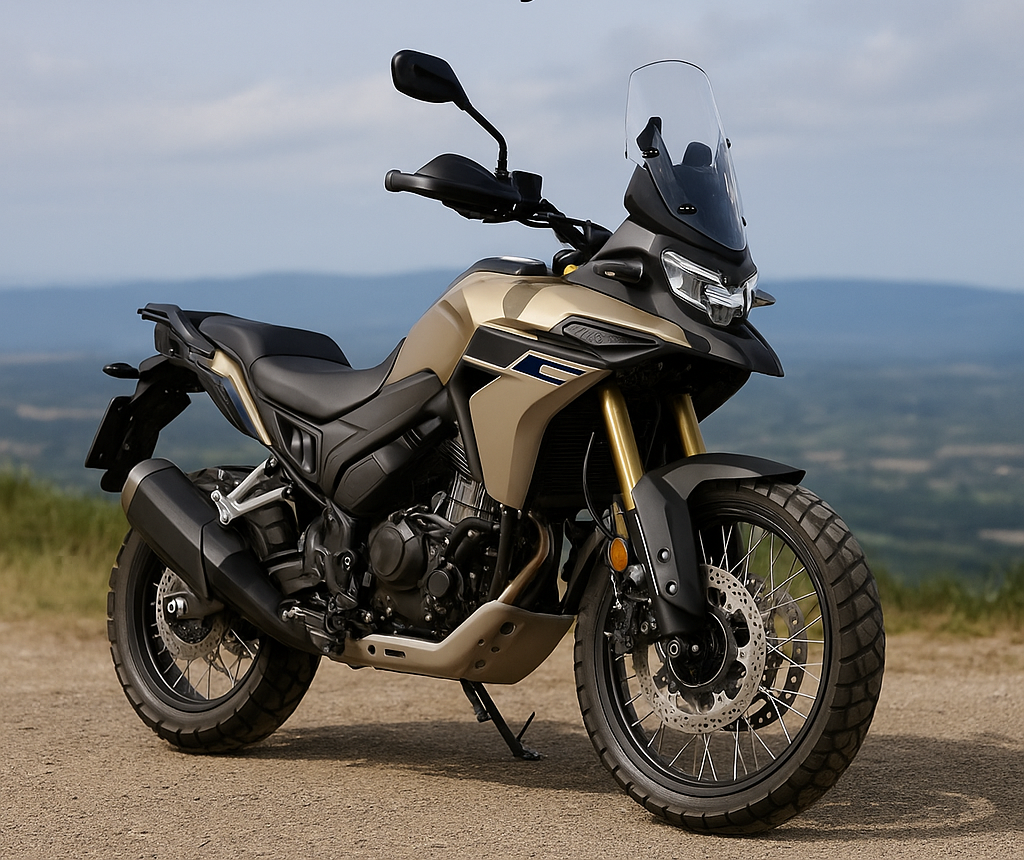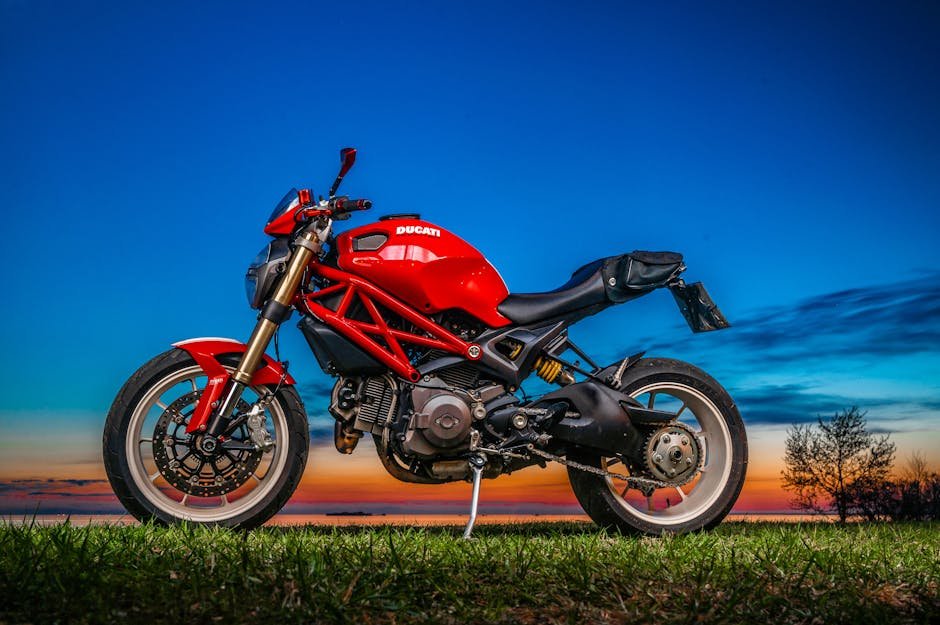Table of Contents
A Decade of Progress in Electric Two-Wheels
The story of electric motorcycles began in 2015, when they were really just the few electric motorcycles – handmade or rarely seen brands such as the first Zero S. There were many skeptics regarding the electric motorbikes, as the available range was short, the charging infrastructure was not sufficient, and a lot of riders didn’t like them.
Thanks to the developments, the situation in 2025 when we fast-forward is much different. Electric motorcycles are now in the hands of practically every producer, and energetic startups which have released different models with exceedingly better performance and range.
For example, Zero Motorcycles (the highest-ranked in this field) is currently selling products like the SR/F battery that runs for more than 100 miles of real-world range, and super battery quick-charge to 95% in about an hour at a Level 3 station. Energica, an Italian manufacturer, provides motorcycles for the MotoE series and offers commercial bikes that can reach speeds of 150 mph with DC fast-charging.
Furthermore, even Harley-Davidson had to part with the famous electric LiveWire, that became a separate brand (”LiveWire One” and the New S2 Del Mar), manifesting the seriousness of traditional producers in terms of the electrification process.
No longer is there any issue concerning performance – hardly e-motorcycles are so quick, so suddenly they are out of the way, going to the next level thanks to instant electric torque. In this fashion, biking device like the Lightning LS-218 or the Damon HyperSport can hit 0-60 mph in less than 3 seconds, they are a threat to the quickest gas superbikes.
The point has altered to technical issues: range, charging, cost, and rider perception. So the question is, are we yet at the area of readiness? Can e-motorcycles become an effective and practical option for the typical rider?
The Current State: Capable, But with Caveats
First, the good news. Electric motorcycles in 2025 are highly capable for certain use cases. If you have a predictable daily commute within, say, 50-80 miles round trip and access to overnight charging, an e-moto can be a wonderful tool. Models like the Zero FXE (urban commuter) or the LiveWire One offer smooth, maintenance-light riding.
No clutch, no shifting, minimal engine vibration or heat – just twist and go. Riders often comment on how freeing it is to ride electric in city traffic; the bike is quiet (though not silent – most emit a futuristic hum), and there’s no concern about stalling or heat soak. The instant torque means quick getaways at lights and effortless overtakes.
Also, we note the advancement in battery life and dependability. Batteries are often warranted by manufacturers for 5 years or more, besides, today’s data concerning modern lithium battery packs is very optimistic they are nearly immune to failure when treated correctly (the same as electric cars).
An ordinary electric bike does not call for a great deal of repairs compared to a gas bike: no oil changes, no air filters, no spark plugs, and on top of that, the regenerative braking can even diminish the need for new brake pads. The overall cost of owning a vehicle can therefore be sharply diminished, for as long as you do not require a new battery (which is still very costly).
Charging infrastructure for EVs has expanded massively – in many cities and along highways, finding a charging station is easier than ever. However, charging remains a key challenge for motorcyclists. Unlike cars, most electric motorcycles don’t have DC fast-charge capability due to weight and space constraints for the necessary hardware. A few do (Energica’s lineup, for example), but many rely on Level 2 AC charging.
That means if you can’t charge at home or work, you might be waiting 3-8 hours at a public station for a full charge, which is not feasible on a road trip. Range is improving but still generally in the 100-150 mile maximum per charge for mixed riding on flagship models – and notably less if riding aggressively or at highway speeds (wind resistance is a huge factor). Long-distance touring on electric bikes remains an adventure in careful planning, not (yet) a mainstream activity.
As per 2025, electric motorcycles account for a meager fraction (1%) in new motorcycle sales in the U.S. (Some States like California record a slightly higher figure). This shows the still relatively early period of their usage. But, on the other hand, the numbers of sales are rising, particularly in connection with young individuals entering the market. Additionally, it is due to the interest in green alternatives by urban commuters.
The spread of electric scooters and low CC electric bikes in some third-world nations is taking off due to their cheapness and support from governments in terms of electrification. Bypassing North America and Europe, electric vehicles are still pervasive at localities and not in habit
Are They Mainstream-Ready? Key Factors to Consider
1. Range & Battery Tech: For an electric motorcycle to truly go mainstream, it needs a range that covers the majority of riders’ use cases without inducing anxiety. Surveys show most riders don’t frequently do 200+ mile days, but they do want the freedom to go for a spirited weekend ride without constant range monitoring. Hitting a reliable 150-mile mixed range (or ~100 mile highway range) is a psychological and practical barrier many want to see crossed.
We’re close – bikes like the Zero SR with the optional Power Tank can get there under ideal conditions, and upcoming battery chemistries (like solid-state prototypes or higher-density lithium) promise further gains. “Are we there yet?” is subjective. For a commuter or casual rider, yes, many e-bikes are ready to meet your daily needs. For an avid tourer or someone without home charging, range might still be a sticking point.
2. Infrastructure & Charging Times: Mainstream adoption requires convenient charging, analogous to refueling a gas bike. Right now, charging is best done at home overnight. If you have a garage or access to a charger at home, an electric bike can slot into your life readily – you leave with a “full tank” every morning. But riders who live in apartments or rely on public charging face inconvenience. The charging time is significantly longer than a gas fill-up.
Not even the bikes which are the fast-charging types (i.e. web, Energica, LiveWire) can go DC station from 20 to 80% in only 30-40 minutes – which is awesome for a lunch stop, but outright different from our usual 5 minutes at a fuel pump. For bikes that have really high mass-market potential, we may require either a breakthrough in fast charging (which a very noticeable advancement must happen) or battery swapping, which is not yet standardized for bikes (however some scooter companies such as Gogoro use it).
3. Cost: The price of entry is a massive hurdle in this case. Normally, electric motorcycles are pretty much pricier than gas-powered bikes. Take, for instance, the Zero SR/F, which will set you back more than $20,000, while the alternative gas sport naked (the Yamaha MT-09) is priced around $10,000.
Even if e-bikes can sometimes receive financial incentives (like tax breaks, etc.), the initial expense discourages many potential riders, especially since the most typical way for stander riders is through second-hand bikes that are affordable.
Maintenance and “fuel” (electricity) may be cheaper, but many riders are more sensitive to purchase price. Until economies of scale improve and battery costs drop further, mainstream adoption will be hampered by cost. The good news is that prices have slowly been improving, and some entry-level electrics like the Sondors or CSC City Slicker are well under $10k (but those are limited in capability).
If industry and government can work on incentives – for instance, the U.S. federal EV tax credit for motorcycles was reinstated (currently 10% up to $2500 credit) – it can help more riders make the leap.
4. Rider Acceptance & Culture: There’s also the intangible factor of rider acceptance. Motorcycling has a culture deeply rooted in engine sound and mechanics. The lack of engine noise on an electric bike is a plus for some (quiet neighborhood riding, enjoying nature sounds) but a minus for others who relish the roar of a V-twin or inline-four. There’s also a skepticism among some veteran riders about new technology – concerns about battery fires, being stranded, or simply a sentiment that “it’s not a real motorcycle.”
However, as more riders actually test electric bikes, many are won over by the experience. The roll-on acceleration and simplicity is addictive. It may be a generational shift: younger riders and those coming from e-bicycles or EV cars adapt quickly. Mainstream readiness depends partly on this cultural shift, which takes time. The industry is tackling it by participating in racing (to prove performance) and doing demo events.
For instance, the Isle of Man TT had the TT Zero electric class for years (showcasing 120+ mph laps by electrics), and as of 2023, we saw outright lap records being broken by petrol bikes but electrics showing they’re not trivial. In MotoGP’s MotoE, all racers are on Energica or Ducati electric race bikes – proving that high performance is achievable.
Real-World Use: Commuters, Recreational Riders, and More
So, who are electric motorcycles already mainstream-ready for in 2025?
Urban Commuters: Somebody who majorly utilizes their motorcycle for commuting and running errands in a city or suburb may find that an Electric motorcycles already fits in nicely. Suppose a rider from Los Angeles rides a Zero FXE motorbike through the use of high-occupancy vehicle lanes among other things. In some states, electric vehicles, including bikes, can use carpool lanes in which case parking and charging at home overnight are the main conversion factors for the rider public charging may not be needed nearby.
Furthermore, this not so much loud vehicle will contribute to the comfort of neighbors, as they will not be aroused at six in the morning by known to them high exhaust noise. Such a line of thinking is what has driven people to electricity in San Francisco, New York, and to bike. The improvement of daily electrical maintenance is extra for the customers who always increase the mileage- no more frequent oil changes for gas mileage commuters.
Short Range Recreational Riders: Not everyone does multi-hundred-mile days. A lot of riders might just do a Sunday morning loop of 60-80 miles with friends and then call it a day. Electric motorcycles can handle that easily now. You might plug in during brunch, but maybe you don’t even need to. In this scenario, electrics are ready and provide a unique pleasure – some describe it as a “magic carpet ride” because of how smooth and quiet it is through scenic areas.
New Riders and Local Explorers: Interestingly, new motorcyclists who don’t have preconceived notions about shifting or engine feel may adapt super fast to electric bikes. With more affordable and smaller electrics coming (think of something like a Honda Grom equivalent but electric – a niche still not fully tapped), newbies could jump straight to electric. Already electric minibikes and scooters are common for younger folks – that could translate to bigger bikes as they move up.
However, there are segments where electrics aren’t mainstream-ready yet:
Touring and Long Distance: If you are a traveling enthusiast who likes cross-country trips or you are not only into driving your bike through the woods but also you are a mountain climbing fanatic, the current electric bikes come with the disadvantages. A petrol tourer can go 200 miles, fill up in five minutes, and ride another 200 on a single tank.An electric bike, on the other hand, would have to take an hour to recharge after 100–120 miles.
And when you add a long ride to recharging the time, fast charging should be more frequent for such a trip. Even with the insufficient fast chargers and long recharge times, electric mountain riding will be a token pursuit for the time being.
A few bold adventurers are handling the situation through charging during stops for food or additionally carrying the hardware needed for the Level 1 charger overnight at motels however this tendency is painfully slow and needs a bit of organization.Cost-Conscious Riders: A good number of riders seek to pay less than $5,000 for a bike. The secondhand electric section is growing, but it is still limited. Old types carry outdated technology and generally, have shorter distances yet still cost thousands of dollars.
On the opposite side, gas bikes have a broader choice and lower price in the used market. As long as the entry of electric motorcycles in that space remains low, riders who are conscious about the budget will be favoring petrol.Nevertheless, the appearance of older models like the Zero S/DS and the Harley LiveWire from the late 2010s which will become affordable, will signal the very beginning of the time electrics becoming everywhere that is economically feasible.
Sound and Emotion: Motorcycling is not only about being practical; it is also emotional. Many of those who ride motorcycles are drawn by the sweet roar and vibration that the internal combustion engines release- it is just a part of the fun. Electric motorbikes replace this with a whisper or a high-pitched whine, which some customers think is futuristic, while others regard it as empty of spirit.
Harley for instance, has a turbine-like whine whereas other manufacturers have experimented with artificial or gear-driven sounds to enhance the character of these electric motorcycles. In the long run, with the aid of music engineering, this electric bike might undergo transformation to the sound which is specific to the particular motorcycle and hence get a better image on the road.Still, for many motorcyclists, the mechanical soundtrack which is classic is inseparable from the whole riding experience. For the present and the near future, the coexistence of electric and gas motorcycles is going to be a reality with the former being the one the inventor and the latter being the one who emotionally connects and establishes tradition.
The Road Ahead
2025 might not yet be the year of 51% electric market share for bikes, but all signs point to steady momentum. Governments in Europe have set future dates (2035 in some cases) to ban sales of new combustion motorcycles as part of zero-emission goals. California and other states often follow suit. This regulatory push means manufacturers are heavily investing in EV tech to be ready.
We’re likely to see more major brands releasing electric models soon – e.g., Kawasaki has already shown a prototype electric Ninja and hybrid as well, and they’ve pledged to have multiple EV bikes by mid-decade. Honda, the world’s largest bike maker, announced plans for several electric models (commuter-focused initially) by 2025. When these big players really enter the market, that’s when mainstream adoption can surge due to their extensive dealer networks and loyal customer base.
Another factor is the environmental and fuel cost angle. As gas prices fluctuate or climb and as younger generations prioritize sustainability, electric motorcycles become attractive. They offer a way to enjoy riding with a smaller carbon footprint and lower “fuel” cost – electricity per mile is generally cheaper than gasoline, especially if charging at home on an EV rate plan or via solar.
So, are electric motorcycles ready for the mainstream? The answer might be: Nearly there for some riders, and not quite for others. In 2025, if your usage pattern matches what current e-bikes deliver, then yes – they can be a practical, thrilling, and responsible choice. If your needs exceed current capabilities, you might wait a few more years. It’s fair to say that electric bikes are where electric cars were perhaps in the early 2010s: starting to penetrate, not yet dominant, but clearly improving and here to stay.
Every year, the “range anxiety” lessens, the charge options increase, and the costs inch down. Enthusiast communities are growing – you’ll find electric motorcycle groups planning rides and sharing tips on maximizing range or finding cool charge spots.
For the mainstream rider thinking of going electric, 2025 offers a compelling proposition if you can work around the current limitations. Try a test ride – the seamless wave of torque and the quiet rush might redefine what you consider fun on two wheels. Many early skeptics turn into fans after an honest test ride. And even if you’re not ready to switch yet, the electric revolution is clearly underway.
It’s not a question of if, but when, electrics become a significant part of motorcycling. Given the trajectory, the latter half of the 2020s could very well be when e-motorcycles hit the mainstream stride – with 2025 marking the point where we seriously pose the question and find the industry not only ready to answer, but already in motion.
In conclusion, electric motorcycles are on the cusp of mainstream viability. For some riders – especially commuters and short-range thrill-seekers – they’re absolutely ready right now, offering a riding experience that is uniquely enjoyable and practically convenient. For others with longer or more traditional needs, a bit more patience will likely be rewarded as technology and infrastructure continue to evolve at a rapid pace. Either way, the electric revolution in motorcycling is charging forward, and it’s an exciting time to witness (or join) this new chapter of two-wheeled history.
Related Products on Amazon







